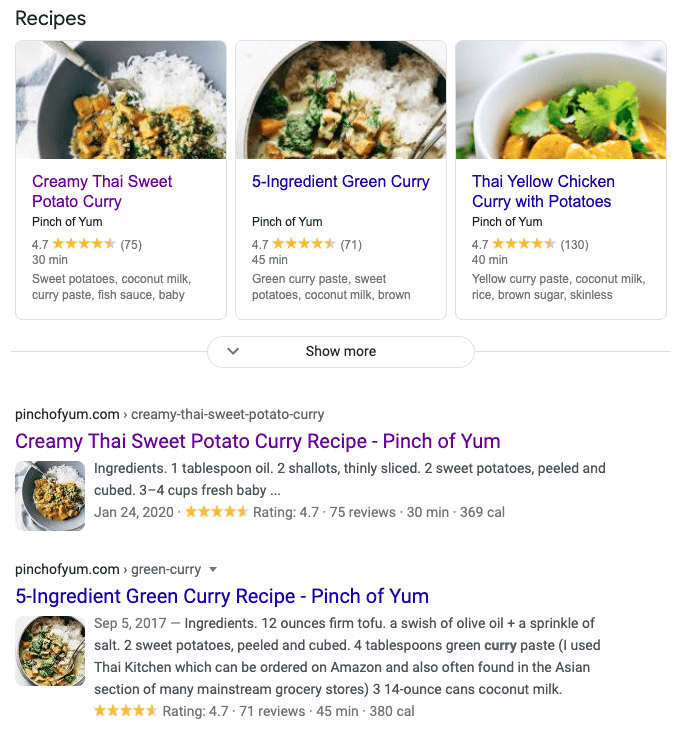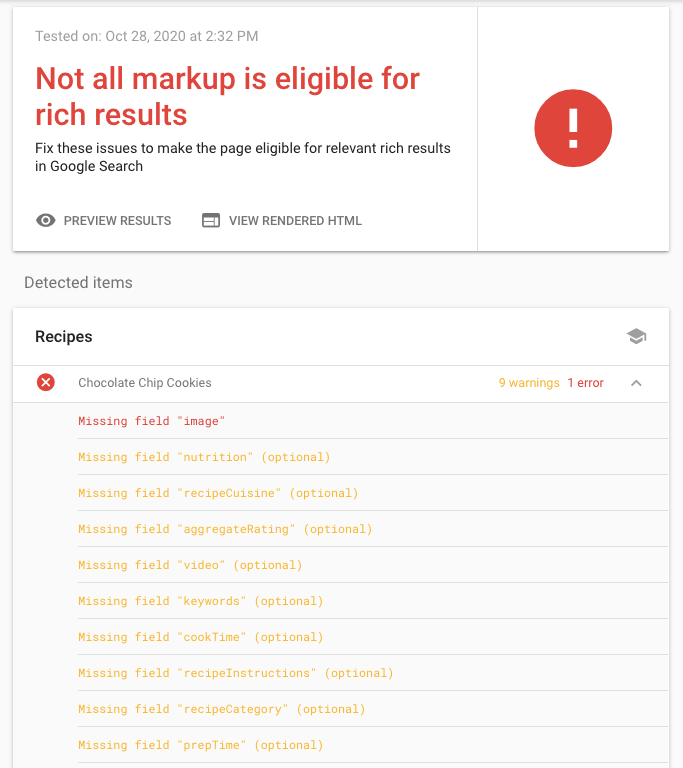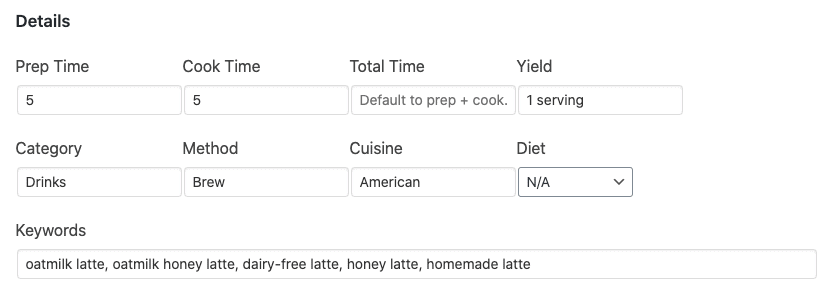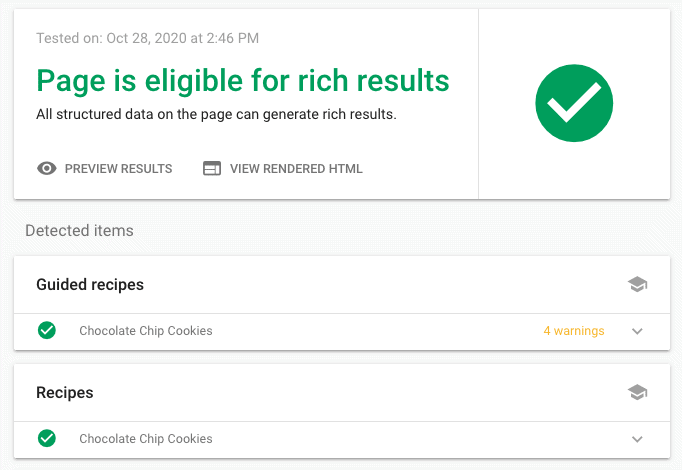If you've got a food blog, you've likely heard the term “rich results” flung around once or twice (or maybe a few hundred times). But what does it mean exactly and how do you know your post is eligible for rich results? And how do you run a Google rich results test?
We'll be covering that in today's post. Onward!
What are rich results?
Rich results are the visual display of structured data. And structured data is the markup that tells Google “Hey, this post contains a recipe so make sure you know that and make it look good!”
So when you're adding in your nutrition information, cook times and ingredients in your recipe card, Google parses all of those details and learns the intent of your post. That way, it knows that it's looking at a recipe post so that it can display the recipe's rich snippet on Google like this:

The importance of rich results
See all of the magic happening in the search results up there, with the ratings, image, and calorie count included? ✨ These are called rich results—they aren't always guaranteed, but you can definitely optimize for them!
In a nutshell, the best way to get those rich results is to make sure that you have all of the fields within your recipe card filled out.
Rich results are appealing to food bloggers because they give your recipe that extra oomph in the search results. With a rich result, the extra information on the page helps users make a more informed decision about which recipe they're interested in making, which makes them more likely to click on your post!
For example, if I'm looking to stay within a certain calorie range for a chili recipe, I would be more inclined to click on the recipe with a calorie count that fits the bill.
How to test your structured data
Now that we have a better idea of what a rich result is and why it's important for your site, the next question is: How the heck do I know what structured data is included in my post? ?
And we have good news to offer on that front! All have you to do is input any one of your blog posts into the Rich Results Testing Tool to see what structured data is missing from your posts in Google's handy dandy tool.
Let's take a look at a chocolate chip cookie recipe that we set up on our test site:

This recipe isn't quite ready to show up as a rich result because of that error. Here, I can see that I'm ‘missing the field image' which is robot talk for letting me know I need to add a recipe image if I want to show up as a rich result.
If I want even richer results, I can start working my way through those warnings, adding things like the cuisine, keywords, cook time, etc. Luckily, I can do all of this in one shot by entering the information through Tasty Recipes!

Pro-tip: Errors will be highlighted in red and are required for rich results while warnings will be highlighted in yellow and are just recommended for rich results.
Once that's done, you'll want to run the test again to make sure that everything is in tiptop shape. Here are the updated results for that same recipe:

How to fix common rich results warnings
My page is now eligible for rich results and the recipe itself doesn't have any structured data errors. The only warnings left are related to Guided Recipes. If you're interested in learning more about how to resolve those warnings, we have it all outlined for you in our blog posts here:
- How to fix the Missing field: “name” warning
- How to fix the Missing field: “description” warning
- How to fix the Missing field: “url” warning
Et voilà! Now you know how to test for structured data so you can go out into the world and add in all of the structured data possible for your posts for beautiful rich results. Go you!
